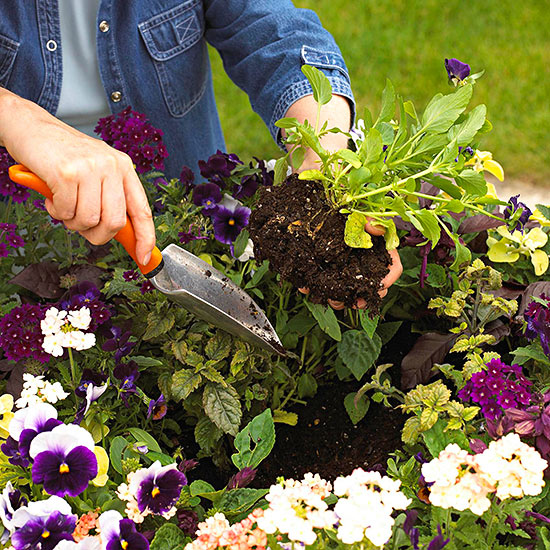






When it comes right down to it, plants require the same things that we do to thrive:
Sunlight. Plants need light, but not all plants require the same amount. Some plants, such as most herbs and vegetables, do best in full sun, which means at least 6 hours of sunlight a day. Other plants, such as ferns and hostas, like shaded spaces and can't live in full sunlight. Plant tags will tell you the light requirements.
Soil. Like you, plants need to have a place to set down roots -- and that's soil. Their soil needs to be just right -- not too wet, not too dry, not too sandy, or sticky with clay. You can add amendments, such as compost, to your soil to make it better.
Read more about building good soil.
Water. Every living thing requires water -- even those plants, such as cactus, which don't need it very often.
Food. Rich soil may provide the needed nutrients. However, depending on what you want to grow, you may need to give plants a boost with supplemental fertilizer.
What you want to grow dictates where you put your garden. If you want vegetables, site your garden in a sunny spot, because vegetables need full sun. If you have trees in your yard (which make shade), choose plants that love dark spots, such as hostas or vinca.
For all practical purposes, there are two kinds of plants: annuals and perennials. Annuals live just one season and produce non-stop flowers all summer long right up until frost. Perennials have a shorter season of bloom, but they grow bigger and better every year.
There are annual flowers and herbs. For example, petunias and marigolds are annual flowers and basil is an annual herbs. There are also perennial flowers and herbs; flowers include peony and daylily and herbs include thyme and oregano.
Perennials are rated according to which hardiness Zones they'll survive in. A perennial's zone range is always listed on the plant tag.
Find the Zone you live in.
Plants come in many forms. You can start with seeds, which are the least expensive way to grow plants, but they take the longest to mature. Plants come in all sizes. You can buy small plants (annuals come in 6- and 8-packs) or larger containers, such as half-gallon to gallon size. The larger the plant, the bigger the immediate impact it makes in the garden. Buy what you can afford, but splurge on big plants when you can.
Planting is easy. Dig a hole twice as wide as the plant's container, pop the plant out of its container, and set it into the ground. Replace the soil around the plant. Water, and add mulch. Ta-da! You are done.
Spacing your plants is important. As they grow, they will also spread out. Some plants do this more than others. Most plants are sold with spacing requirements on the plant tag.
Once planted, your garden needs a few more things:
Watering: Plants need water to grow. You can hand-water small gardens. For larger areas, water with a soaker hose or irrigation system. Both are easy to install.
Mulching: If you add mulch around your plants, you won't need to weed because most weeds can't sprout up through mulch. Use shredded bark, pine needles, or cocoa bean hulls. Mulching helps conserve soil moisture, so you'll have to water less too.
Learn how to mulch.
Fertilizing: Fertilizer adds fresh supplies of nitrogen, phosphorus, and potassium to the soil -- which, in turns, builds bigger and better plants.
Read more about the basics of fertilizing.
Planting Tomatoes in Your Garden
Everything you Need to Know About Crape Myrtle
A Guide To Enriching Your Garden Soil
Flower Garden Landscaping: What You Need to Know
A Guide to Organic Garden Soil
What You Need to Know Before Buying Garden Tool Set
Know And Get The Basic Tools You Need To Enjoy Your Gardening Experience
Copyright © www.100flowers.win Botanic Garden All Rights Reserved